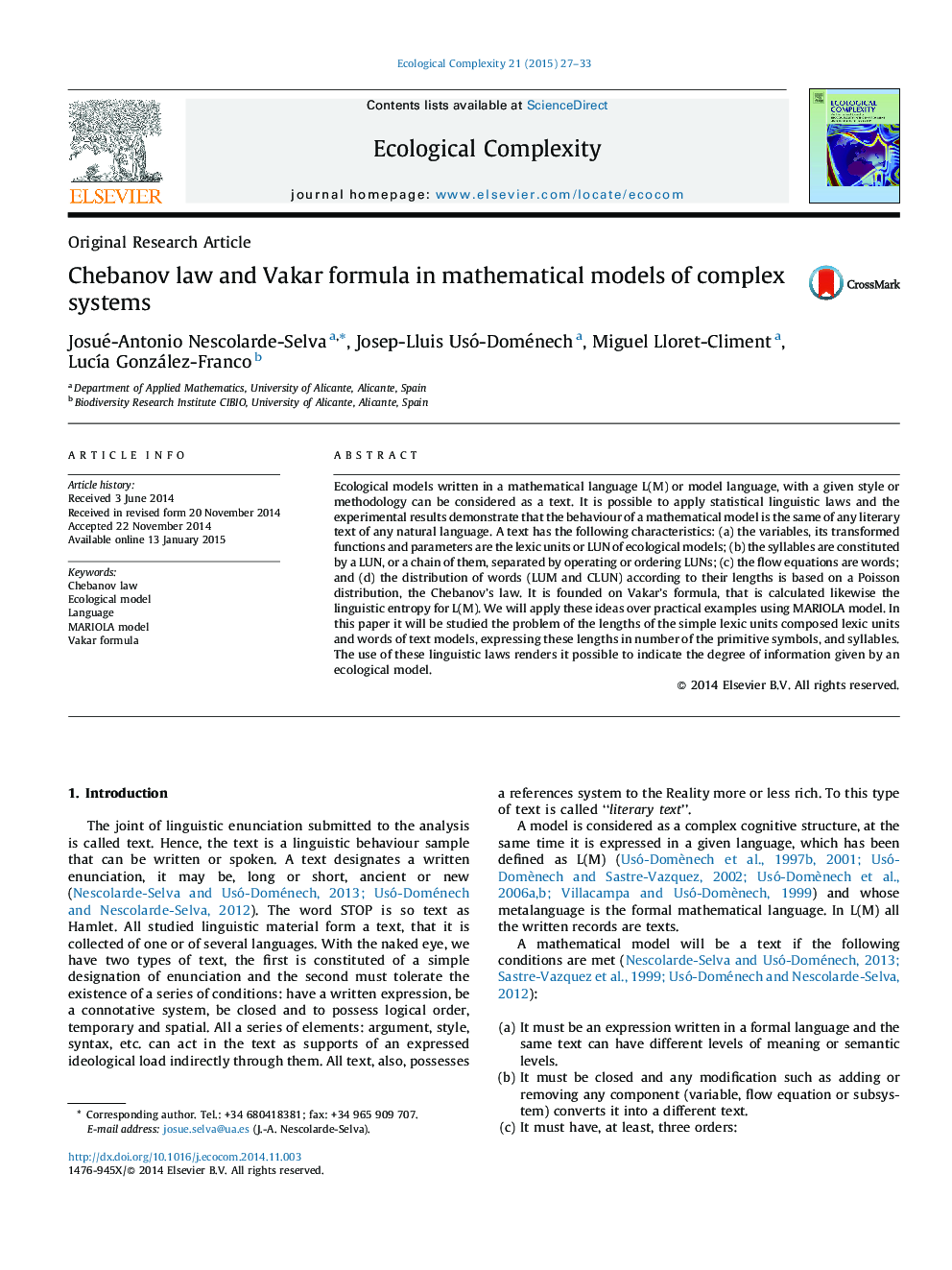| Article ID | Journal | Published Year | Pages | File Type |
|---|---|---|---|---|
| 4372398 | Ecological Complexity | 2015 | 7 Pages |
•Analyses of ecological models.•The authors studied the problem of the lengths of the simple lexic units, composed lexic units and words of a ecological text model.•The authors studied the degree of information given by an ecological model.•Mathematical formulation of ecological systems.
Ecological models written in a mathematical language L(M) or model language, with a given style or methodology can be considered as a text. It is possible to apply statistical linguistic laws and the experimental results demonstrate that the behaviour of a mathematical model is the same of any literary text of any natural language. A text has the following characteristics: (a) the variables, its transformed functions and parameters are the lexic units or LUN of ecological models; (b) the syllables are constituted by a LUN, or a chain of them, separated by operating or ordering LUNs; (c) the flow equations are words; and (d) the distribution of words (LUM and CLUN) according to their lengths is based on a Poisson distribution, the Chebanov's law. It is founded on Vakar's formula, that is calculated likewise the linguistic entropy for L(M). We will apply these ideas over practical examples using MARIOLA model. In this paper it will be studied the problem of the lengths of the simple lexic units composed lexic units and words of text models, expressing these lengths in number of the primitive symbols, and syllables. The use of these linguistic laws renders it possible to indicate the degree of information given by an ecological model.
